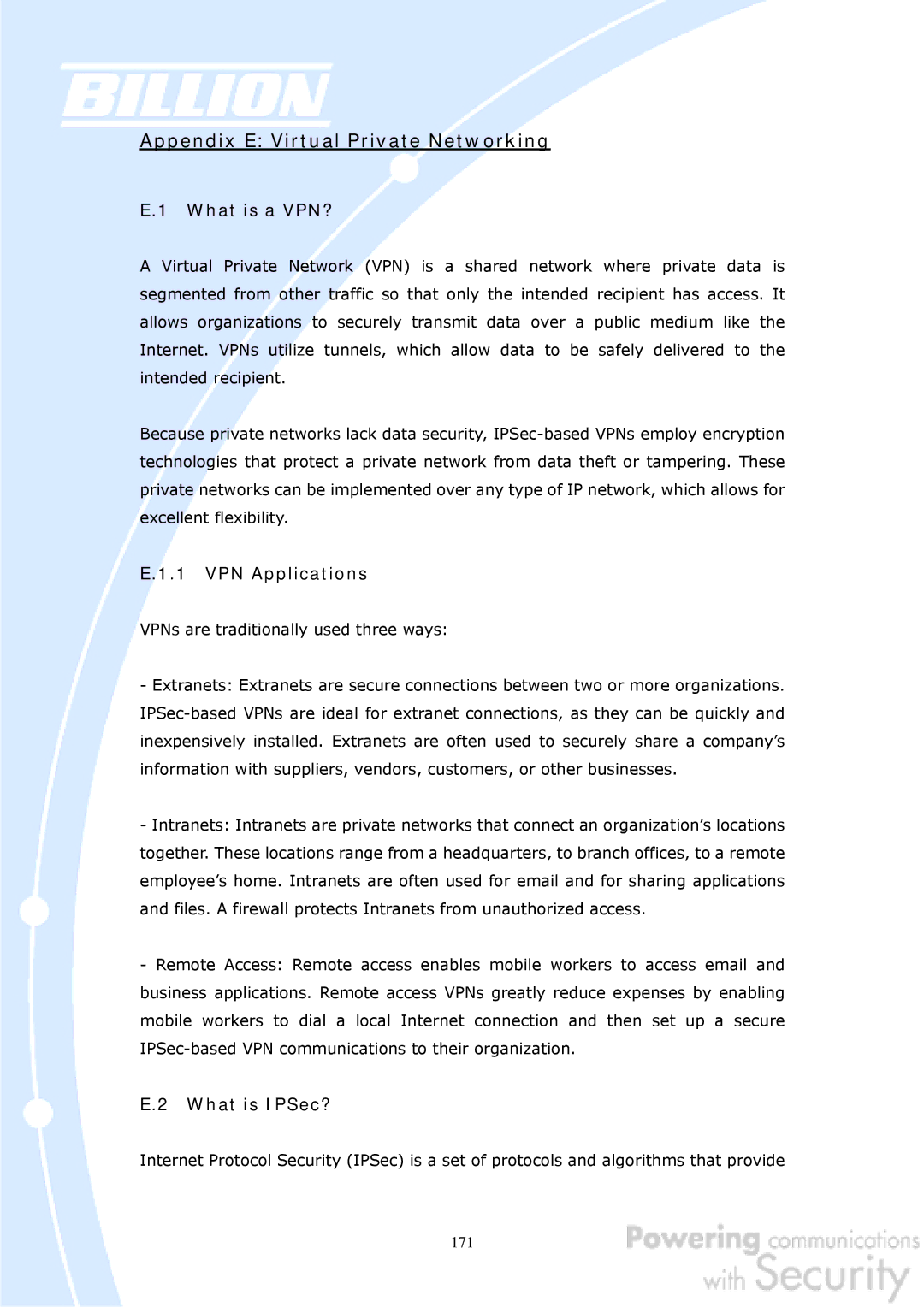
Appendix E: Virtual Private Networking
E.1 What is a VPN?
A Virtual Private Network (VPN) is a shared network where private data is segmented from other traffic so that only the intended recipient has access. It allows organizations to securely transmit data over a public medium like the Internet. VPNs utilize tunnels, which allow data to be safely delivered to the intended recipient.
Because private networks lack data security,
E.1.1 VPN Applications
VPNs are traditionally used three ways:
-Extranets: Extranets are secure connections between two or more organizations.
-Intranets: Intranets are private networks that connect an organization’s locations together. These locations range from a headquarters, to branch offices, to a remote employee’s home. Intranets are often used for email and for sharing applications and files. A firewall protects Intranets from unauthorized access.
-Remote Access: Remote access enables mobile workers to access email and business applications. Remote access VPNs greatly reduce expenses by enabling mobile workers to dial a local Internet connection and then set up a secure
E.2 What is IPSec?
Internet Protocol Security (IPSec) is a set of protocols and algorithms that provide
171
